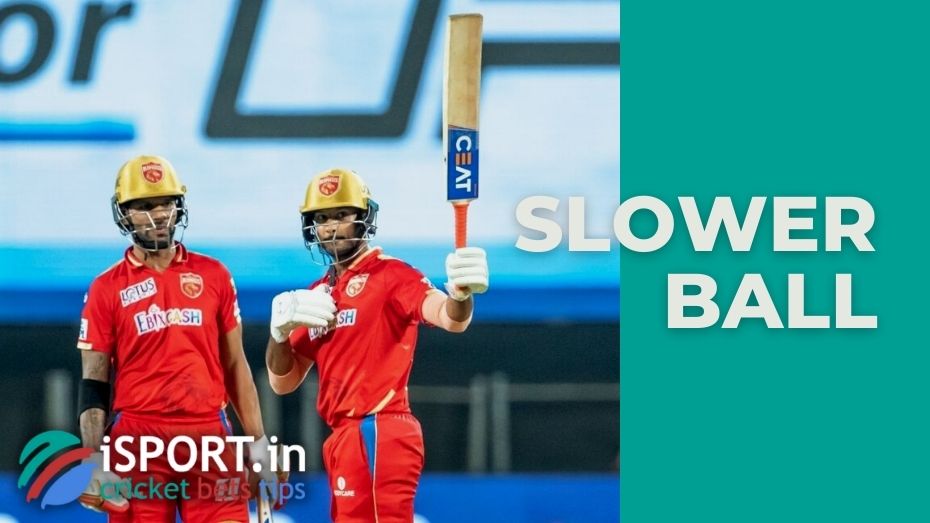Slower ball: a review of the cricket term

The technique that a bowler uses in cricket when serving the ball is one of the main sights in the game. It seems that you only need to make a throw, but if you go into details, there are many options for these throws.
One of the most common techniques that modern bowlers adhere to is the Slower ball. In this article, we will talk about what it is in general and also list the five most common techniques in this type of serve.
Slower ball: what is it
Before proceeding to a detailed analysis of the popular Slower ball techniques, you need to define this term briefly. This is exactly what we are doing:
Slower ball is a slower than usual ball delivery. Its complexity lies in the exact calculation of the trajectory of the feed and the force of the throw.
When making this throw, the bowler adheres to the simplest goals: to deceive the batsman and make him play too early so that he either completely misses the ball or hits it high in the air so that it is easier for other players to catch the projectile.
The Slower ball must be directed exactly at or near the stumps for the serve to be effective. In this case, the bowler’s actions seem completely normal for the batsman and, if he falls for this trick, he starts playing at the wrong time and allows the opponent to pick up points.
There are a large number of techniques and tricks that bowlers use to make a Slower ball. We will talk about this in the next section of the review.
Five Common Techniques of the Slower ball
Slowing down the ball in the serve and making it go along the required trajectory is not an easy task. However, there are a number of specific techniques in cricket that bowlers successfully use.
We will tell you about the five most common techniques of the Slower ball.
- The Knuckleball.
It is believed that this particular type of Slower ball is the most difficult for a batsman to identify. To perform this trick, bowlers clamp the ball with the joints of the middle and index fingers. In this throw, it is also interesting that, as the moment of releasing the ball approaches, the pitcher’s speed decreases sharply, but the speed of movement of the hand looks quite sharp.
Batsmen often cannot hit this ball, but this technique requires the bowler to have full control over the balance of the body and patience on the playing field. Among the cricket veterans who had a good command of this type of Slower ball were Charl Langveldt and Zaheer Khan.
- Offcutter.
Many bowlers believe that this type of throw is the simplest among the Slower ball and effective. When performing such a pitch, bowlers, instead of placing the index and middle fingers in the usual position together on the seam of the ball, move the middle finger around the ball, and then, at the time of making the throw, this finger falls down.
This trick is used by many modern bowlers, including, for example, Dwayne Bravo and Tim Southee.
- Legcutter.
This technique is often called an absolute nightmare for right-handed batters. In fact, this is about the same as Offcutter, except that the fingers go the other way so that the ball will be cut from right to left.
This variation of the Slower ball requires a bowler to have a flexible wrist, so modern bowlers rarely use this trick. For example, the cricketer Trent Boult performs this throw absolutely accurately.
- Back of the hand.
This version of the serve is not so secretive but, nevertheless, very powerful. Bowlers release the ball directly from the back of the hand, making it look like a leg spinner bowling a googly. Such a throw becomes more effective when the bowler releases the ball from above, providing an additional rebound. However, this type of Slower ball has a drawback: experienced batsmen can recognize this serve immediately after releasing the ball and not buy into the trick.
Among the modern bowlers who use this type of pitch from time to time, for example, Tom Curran and Jofra Archer.
- The Split-finger.
This throw is the most traditional type of Slower ball. The releasing fingers are kept separate from the seam at the moment when the ball is released. The decisive factor here is the seam. It can be either vertical or swing after release, which causes the ball to swing depending on the surface condition.
One of the athletes who perfectly performed this technique was Glenn McGrath. However, the cricketer no longer plays, and modern bowlers have not managed to surpass the master. Therefore, this type of throw is rarely seen.
Note that these are not all variations of the Slower ball. There are other tricks, but the ones mentioned above are the most spectacular and common.
And what, in your opinion, is the most interesting technique of Slower ball? Leave your opinions in the comments.
